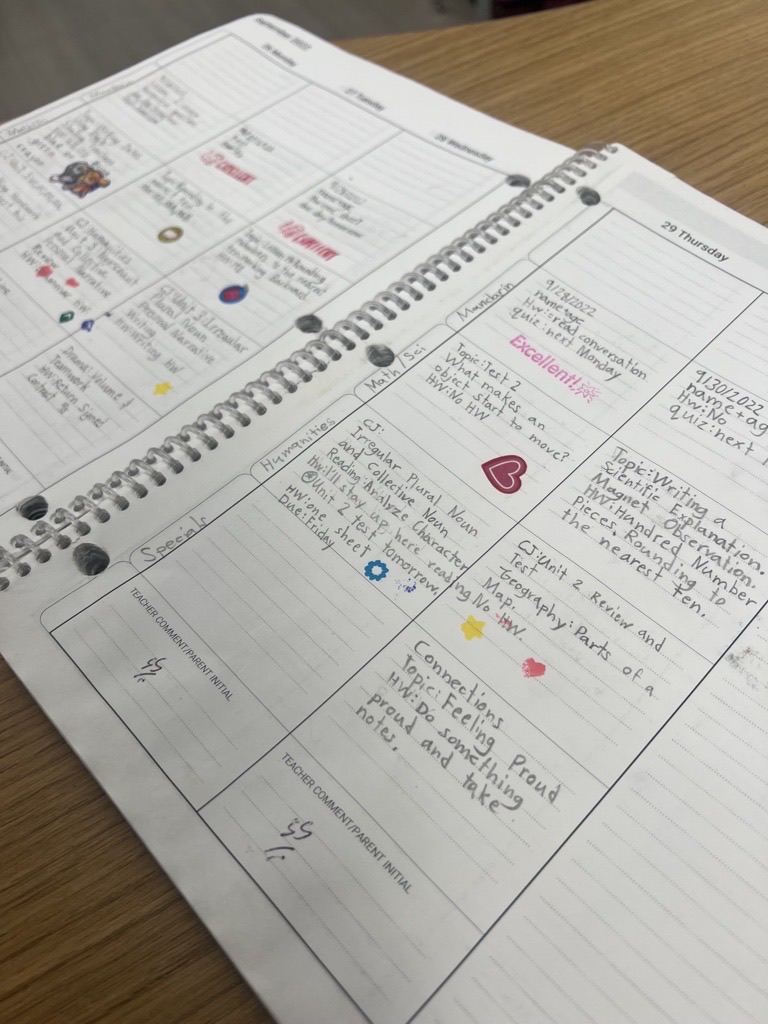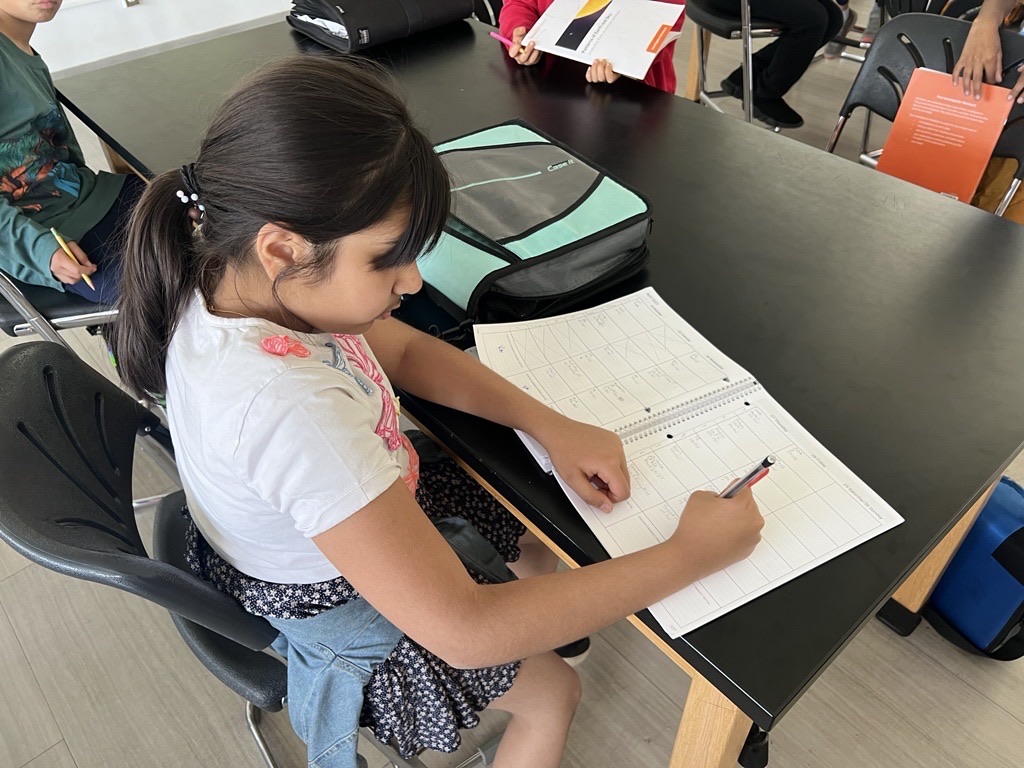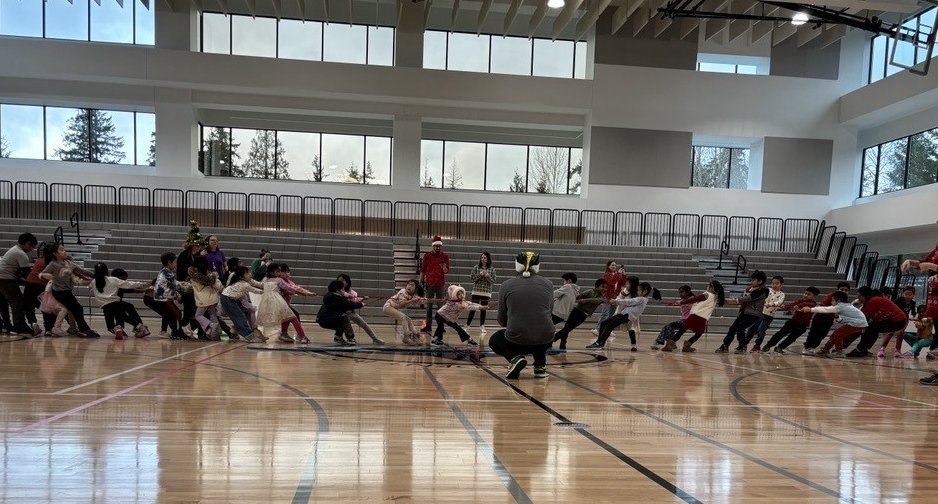August 16, 2024

Helping students manage their time and schoolwork effectively is core to the BASIS Curriculum. One of our most important tools in developing students with life-long habits of self-direction and disciplined, critical enquiry is the Communication Journal (CJ).
At first glance, it’s an analog daily planner. In practice, it’s the epicenter of our students’ educational experience, a record of their wins, their losses, and most importantly, their areas for improvement. During the school day, we focus on building the student-teacher relationship. The CJ is critical in helping families feel involved in their child’s education at the end of the day. It is the first daily touch-point between teachers and parents and acts as a discussion started at home between students and their families.
The CJ is central to our curricular philosophy not to post homework or grades online, or remove students from conversations about their own education. It is the tool that makes this philosophy a powerful growth opportunity for students to own their own academic and intellectual progress.
Over time, after successful usage of the CJ has been proven, students can expect to have more independent ownership of their CJ, and less and less oversight by their teachers and parents. Our goal is to start strong and while they are building their habits, have consistent daily checks. But as the years move on, we train students to become more independent, and less dependent on others for their own academic responsibilities.
Kindergarten Communication Journal
Even our youngest students have their own CJs to record their work and have their parents sign each evening. Kindergarten students are expected to record their own CJ notes each morning.

Grades 1 – 3 Communication Journal
Unlike students in Kindergarten who primarily stay in their classroom throughout the day, students beginning in Grade 1 travel from classroom to classroom for each subject. The expectation of a CJ note from each Subject Expert Teacher (SET) begins in Grade 1 and continues on through high school. Students in Grades 1 – 3 receive assistance recording their CJ notes from their Learning Expert Teachers (LET) who will often give out stamps or stickers for a job well done!

Grades 4 – 5 Communication Journal
For students in Grades 4 and 5, the use of the CJ is now a daily habit. Though our Grade 4 students still have their LET to help them, in Grade 5 the responsibility rests solely on the student. Students who have been with us throughout their elementary years know its power in keeping them accountable for their education, and even new students can appreciate this tool for helping them keep their upcoming assignments and assessments organized on a daily basis.

Grades 6 – 8 Communication Journal
In middle school, we start to see more and more students not needing their parent signature every night. There are fewer CJ checks happening in the classroom and at home depending on the student. But, at the first sign of disorganization, the first step expressed by their Dean of Students, one of their SETs, or their parents is always the same, “Let’s look at your CJ.”

Grades 9 – 12 Communication Journal
In high school, the CJ is perfected. Not only are students rarely needing their parents to sign their CJ, but they are now using it as their own tool to organize their after-school activities. Many high school students will write reminders for things to print at home, office hours to attend, and even their clubs in their CJ. The goal of being organized, thinking ahead, and ready for each day has been achieved.

Unsurprisingly, our Alumni often cite the use of the CJ as one of the most helpful habits learned from our program. Many use their own tools of organization with their electronic devices now, but every year we have a few seniors who ask us for an extra CJ before they leave us.
Our educational philosophy is centered around student autonomy and self-advocacy and the Communication Journal is just one tool that helps us achieve that.


